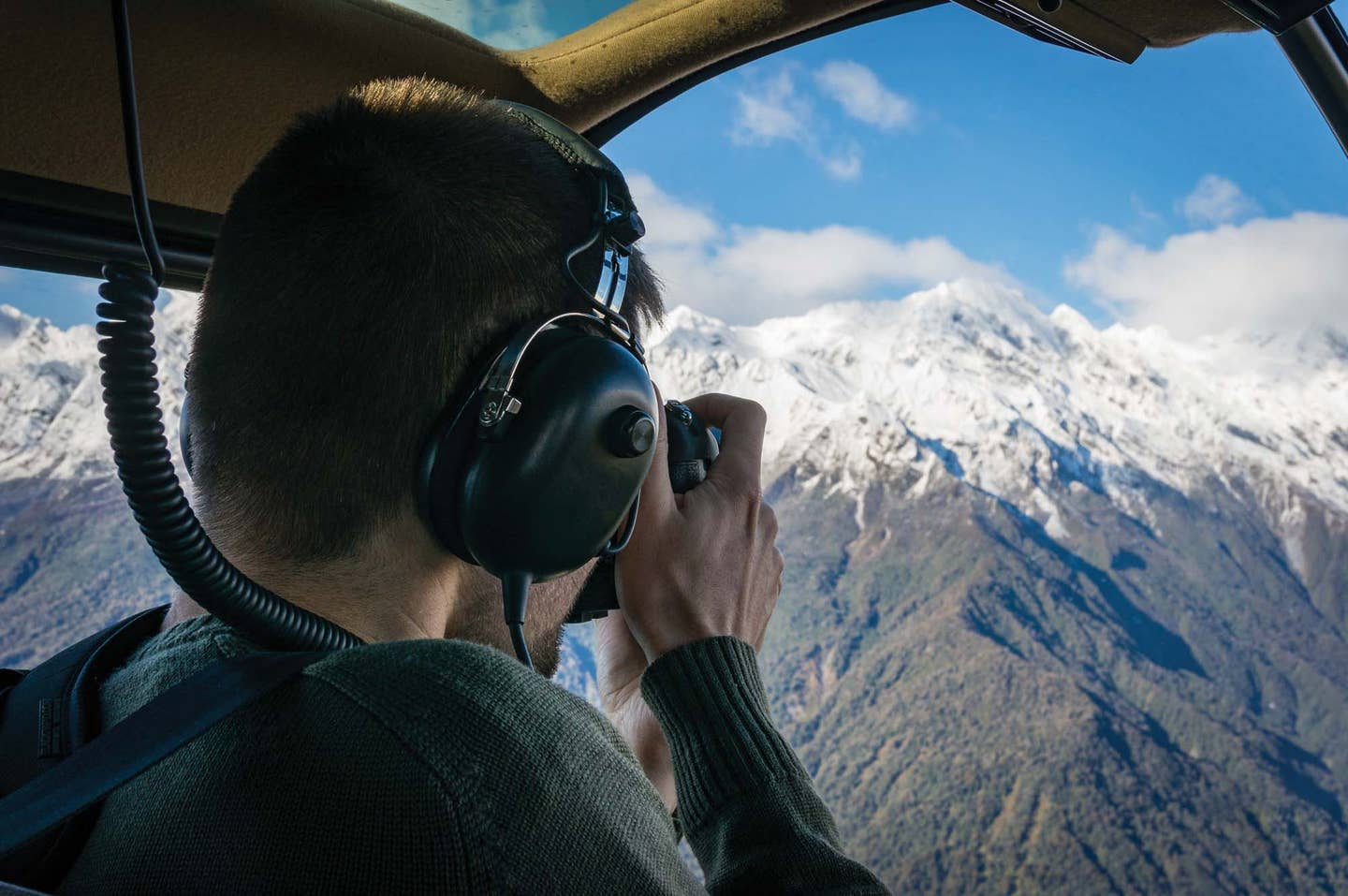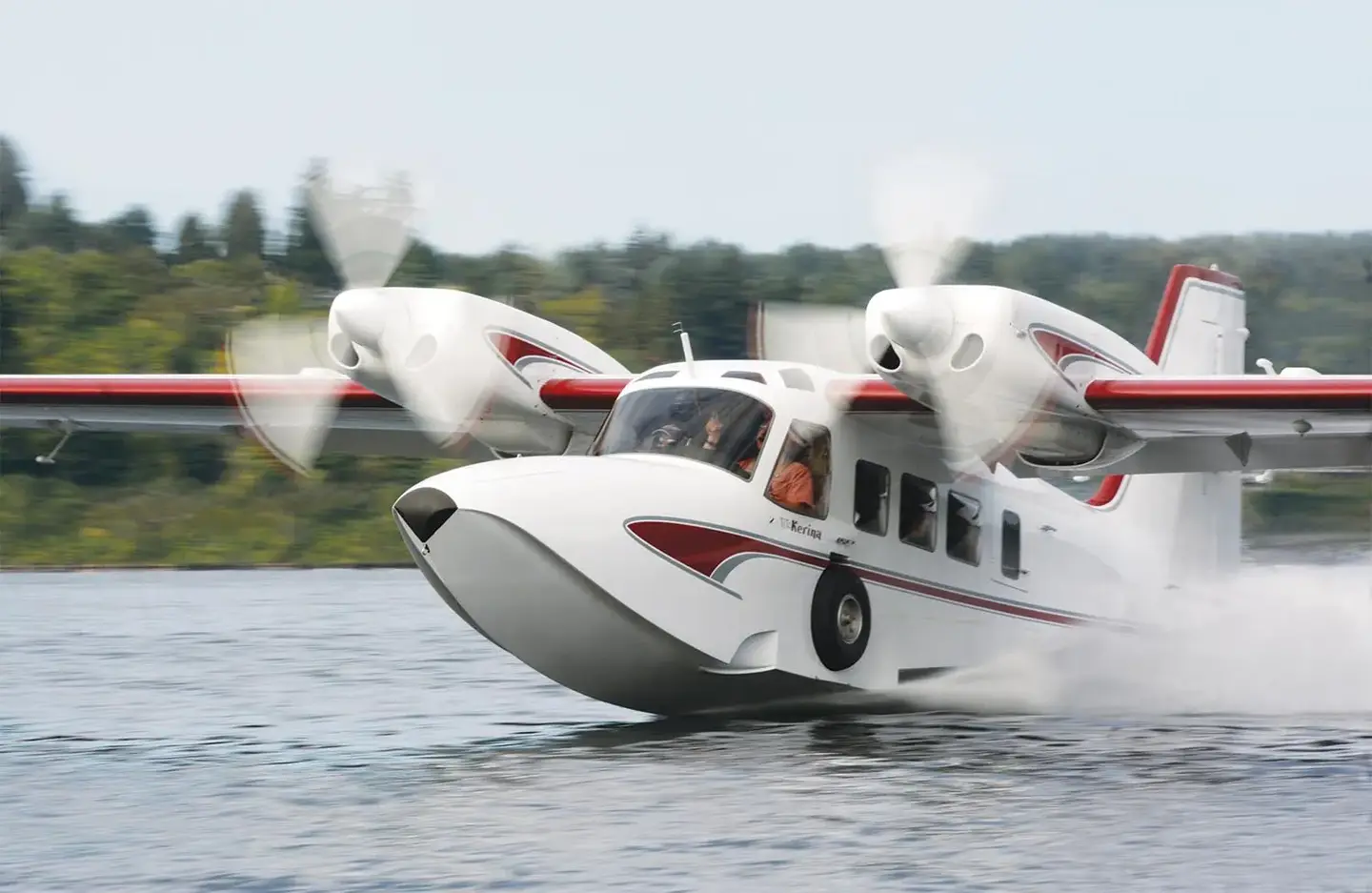Seven Twins For The New Year
This category added one model to the list
 |
Piston twins have gradually dwindled down to a precious few. For that reason, it was surprising when a new twin was announced early in 2014. All five certified models from last year are back, plus one more is nearing U.S. production certificate. That's only about 25% of the general aviation multi-market of the late '70s and early '80s, but there will always be a market for multi-engine trainers.
To that end, three of the six airplanes on the 2015 list are primarily trainers, though all six could conceivably be used for family transport. One is a surprising minimalist effort from Italy, two are Pipers (long a leader in building multi-engine piston airplanes), one is an over-the-top Beech and a fifth is a familiar Austrian design. The sixth is a former Russian utility twin that should be certified by the time you read this. Never let it be said that building general aviation airplanes is a uniquely American province.
BEECHCRAFT
 Beech G58 Baron |
Beech G58 Baron. If money isn't an object, the most lusted-after piston twin above the planet is the G58 Baron. This Beech deserves its name/title, as most pilots who have flown Barons can't help but love them.
Just as with the Seneca, the Baron transÂlates a single-engine fuselage---in this case, that of the beloved 36 Bonanza---onto a twin-engine package. The Baron adds two feet more span per wing and utilizes a pair of the same 300 hp Continental IO-550 engines that power the Bonanza, for a power loading of 9.2 pounds per horsepower.
Departing from a smooth sea-level runway, the Baron will scamper off the ground in 2,300 feet and start uphill at an initial 1,700 fpm. I once delivered a new Baron from the Beech Factory in Wichita, Kan., to Long Beach, Calif., with only two folks aboard, and a high-density altitude takeoff from Santa Fe, N.M., wasn't much of a challenge for the airplane. Level at 8,500 feet where 75% power is all there is, and you could see as much as 200 knots cruise on about 32-34 gph.
The more relevant aspect of flying a Baron, however, is the handling. On a recent delivery of a G58 to Johannesburg, South Africa, in company with a surgeon who had transitioned through two Bonanzas and an E55 Baron before finally realizing his personal dream airplane, the G58 flew as if it were on a cloud for the 10,000-mile trip. Beech twins have always been a cut above everything else in the sky in handling. We made the trip in eight easy days, counting a day off in the Canary Islands, and I'd do it again in a heartbeat. Price: $1,373,900.
DIAMOND
 Diamond DA42 NG |
Diamond DA42 NG. If you're looking for the most sophisticated multi in general aviation, you can't do much better than Diamond Aircraft's innovative Twin Star. These days, it seems everyone is suddenly discovering diesels, but Diamond discovered them a decade ago when they introduced the DA42. The original German Thielert diesels had problems, however, so Diamond came up with their own turbo-diesel engines, the Austro line, and that's the primary engine used today. (The Lycoming IO-360 version is being phased out.) The Austro AE300 diesels develop 170 hp apiece, and push the DA42 along at 174 knots at optimum cruise heights and 60% power. The result is a remarkably efficient twin boasting performance and efficiency that outstrips its power.
The Twin Star is certainly the most futurÂistic of twins, featuring upturned winglets on each tip, a tall T-tail and doors on each side. The Diamond twin has a max takeoff weight of 3,935 pounds and scores 174 knots in cruise at 60%. Price: $755,000.
PIPER
 Piper Seminole Piper Seminole |
Piper Seminole. Piper's ubiquitous PA-44-180 is the only one of the major manufacturers' training twins to survive the cutbacks of the 1980s. The underpowered Grumman American Cougar lasted only two years before Grumman folded their general aviation line. Beech's Duchess did little better, introduced in 1978 , discontinued in 1982.
The Seminole became an instant hit on the multi training market, especially among flight schools. In case anyone cares, cruise is 160 knots, and multi-engine climb is 1,300 fpm. The 180 hp O-360 Lycoming engines are among the most durable in the industry, and that benefit hasn't gone unnoticed by the major institutional flight schools. Several universities and foreign air forces have selected the Seminole as their advanced trainer. Piper doesn't mind that sales to private owners may be minimal, provided they can continue to sell Seminoles to the major flight schools. Price: $663,400.
 Piper Seneca V |
Piper Seneca V. As the name implies, the current Seneca V is the fifth generation of Piper's talented twin. Introduced in 1972 as a normally aspirated multi with 200 hp, four-cylinder Lycomings, the Seneca evolved to a pair of turbocharged six-cylinder, 220 hp Continentals. The airplane will never be mistaken for a trainer. Instead, it's an ultra-comfortable, six-seat, multi-mission twin capable of flight in the bottom five miles of sky.
In fact, the current Seneca is probably the most versatile production twin available. The airplane's Saratoga fuselage can be quick-changed to a freighter. Under the right CG and fuel circumstances, the Seneca V can be drafted to haul six people in comfort, turbocharging allows it to top the tallest of mountains, speed easily tops 190 knots up high, and the airplane is almost Cherokee docile in flight.
The Piper's big cabin retains the basic Saratoga configuration with a cockpit entry door at forward right and a pair of cargo doors at aft left. The passenger enclosure is spacious and comfortable, but don't plan to carry more than three folks plus baggage in the six seats unless you're willing to download fuel. Price: $1,011,300.
TECNAM
 Tecnam P2006T |
Tecnam P2006T. As with auto design, the Italians always seem to come up with new ideas. The P2006T premiered at Oshkosh six years ago and was granted FAA certification in 2011. Though the airplane seemed well built and cleverly designed, some thought it was a little too off-the-wall to succeed.
Some were wrong, though the definition of success is indeed loose. To date, there have been some 100 of the type delivered, most of those overseas. The Tecnam P2006T is a kind of mini-Aero Commander, powered by a pair of carbureted 100 hp Rotax 912S3 engines---both water and air-cooled. The VLT (Very Light Twin in Tecnam speak) is a four-seater, approved for a 2,600-pound gross weight. The wheels retract into a pair of outriggers at lower-mid cabin, and pilot and passengers have two doors for entry/exit. Mixture control is automatic, so the panel contains only throttle, prop and carb heat controls for each engine.
It's a compact package with reasonable performance (1,300 fpm climb and 147 knots cruise) and low hourly operating costs. For economically challenged flight schools, that last feature may be the overriding advantage. Price: $580,000 (with Garmin G100 glass panel).
VULCANAIR
 Vulcanair P68 Vulcanair P68 |
Vulcanair P68. Italian manufacturer Vulcanair purchased all rights to the Partenavia line of twin-engine utility aircraft in the 1990s, and the company has gone on to expand the model to a number of variations on the basic P68 airframe and wing. The Vulcanair family features a half-dozen models that range from six to 11 seats, fixed and retractable gear, normal aspiration and turbocharging, even an all-plexiglass nose designed specifically for extreme forward visibility (the latter especially useful for military reconnaissance, pipeline and powerline patrol, and wildlife management). Cruise speeds range from 150 to 220 knots. The Vulcanair models are renowned for semi-STOL flight characteristics and loading flexibility. Many models offer three doors for entry/exit or cargo loading. Power ranges from a pair of 200 hp Lycomings on the P68C and Observer models to 328 shp turbines on the Rolls Royce-powered retractable A-Viator. Price: $956,000 (P68VR); $944,000 (P68C).
Coming Soon |
| Avia Accord 201. As we go to press in early November, the Russian 201 twin, partner to the former Liberty XL-2, isn't certified, though all FAA flight tests are said to be complete. Overseas, the airplane is known as the Avia, and it was obviously designed for a multitude of diverse missions. Like many other Russian designs, the 201 is nothing if not utilitarian---built for everything from paved strips to grass or even water runways.
The fixed-gear 201 mounts its pair of 210 hp Continental IO-360s on high wings, and the Russian model may be mounted on wheels, skis or floats. Gross weight is listed as 4,850 pounds, and 1,927 pounds is useful load. Up to 1,104 pounds of that can be fuel, so payload is 823 pounds with full tanks. At max gross and full fuel, endurance is seven hours at mid-cruise settings, ideal for out-and-back missions in the boondocks. The airplane has a pair of clamshell doors at aft cabin for medevac, cargo or skydiving applications. It may also be used for passengers in seven-seat mode. Cruise is a modest 113 knots, so you can't fly far or fast, but you can haul a major load between places without names. Exact pricing not identified at press time. |

Subscribe to Our Newsletter
Get the latest Plane & Pilot Magazine stories delivered directly to your inbox






